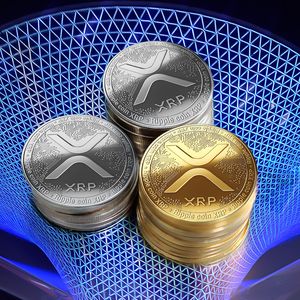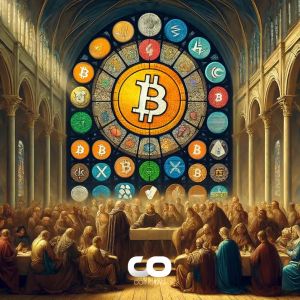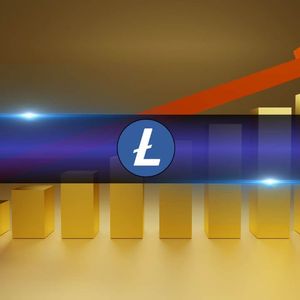In a fascinating turn of events in the cryptocurrency landscape, the flow of stablecoins is charting a new course. Forget the usual Ethereum dominance – 2025 is witnessing a significant surge in stablecoin issuance on alternative blockchains, specifically Tron and Solana. Let’s dive into the data and understand what’s fueling this intriguing shift in the world of digital assets. Are we seeing a new era for stablecoins? Let’s explore. Tron and Solana’s Explosive Growth in Stablecoin Issuance According to recent insights from blockchain analytics firm Spot On Chain, a clear trend is emerging: stablecoins are increasingly being minted on networks beyond Ethereum. The data speaks volumes. Since the dawn of 2025, Tether, the behemoth behind USDT, has injected a staggering three billion USDT directly into the Tron network. Concurrently, Circle, the issuer of USDC, has minted an even more impressive 7.75 billion USDC on the lightning-fast Solana blockchain. This significant activity raises some crucial questions: What’s driving this preference for Tron and Solana? Is Ethereum losing its grip on the stablecoin market? What are the implications for users and the broader crypto ecosystem? Let’s break down the key factors contributing to this shift. Why Tron is Attracting Massive USDT Issuance Tron has long been a popular choice for USDT, and this year’s data reinforces that trend. Several factors contribute to Tron’s appeal for stablecoin issuers and users alike: Low Transaction Fees: Tron is renowned for its incredibly low transaction fees. In a world where every cent counts, especially for high-volume stablecoin transactions, Tron’s cost-effectiveness is a major draw. Users can move USDT on Tron without incurring hefty gas fees, making it ideal for everyday transactions and remittances. Fast Transaction Speeds: Speed is of the essence in the fast-paced crypto world. Tron boasts significantly faster transaction speeds compared to Ethereum’s mainnet. This quicker settlement time is crucial for traders, exchanges, and applications requiring rapid stablecoin transfers. Accessibility and Global Reach: Tron has cultivated a strong global community, particularly in regions where low fees and fast transactions are paramount. This widespread accessibility makes it a preferred network for users in emerging markets and beyond. Established Infrastructure: Tron has built a robust and reliable infrastructure over the years, supporting a large volume of transactions and a thriving ecosystem of decentralized applications (dApps). This established foundation provides confidence to stablecoin issuers and users. Solana’s USDC Surge: Speed and Efficiency Reign Supreme Solana’s explosive growth in USDC issuance is another compelling narrative. While Tron’s appeal is rooted in low fees and broad accessibility, Solana’s strength lies in its unparalleled speed and efficiency. Here’s why Circle is increasingly choosing Solana for USDC minting: Blazing-Fast Transaction Speeds: Solana is engineered for speed, boasting incredibly high transaction throughput and near-instant finality. This makes it exceptionally well-suited for high-frequency trading, decentralized finance (DeFi) applications, and any use case demanding rapid stablecoin settlements. Scalability and High Performance: Solana is designed to scale to meet the demands of a growing ecosystem. Its high performance capabilities allow it to handle a massive volume of transactions without congestion, ensuring a smooth and efficient user experience. Growing DeFi Ecosystem: Solana’s DeFi ecosystem is rapidly expanding, attracting a wide range of innovative projects and users. The demand for USDC within this vibrant ecosystem is naturally high, driving increased issuance on the Solana network. Lower Fees Compared to Ethereum: While not as low as Tron, Solana’s transaction fees are significantly lower than Ethereum’s, especially during periods of network congestion. This makes Solana a more cost-effective alternative for many stablecoin use cases, particularly those within DeFi. Ethereum’s Minimal Direct Stablecoin Issuance: What’s Happening? The data from Spot On Chain highlights a striking contrast: direct stablecoin issuance on Ethereum has been notably minimal in 2025. This doesn’t necessarily mean Ethereum is losing its relevance in the stablecoin space, but it does suggest a shift in issuance patterns. Here are some possible explanations: Focus on Layer-2 Solutions: Ethereum’s ecosystem is heavily invested in Layer-2 scaling solutions like Optimism, Arbitrum, and zkSync. It’s possible that stablecoin issuers are increasingly focusing on minting and utilizing stablecoins on these Layer-2 networks to leverage their lower fees and faster speeds while still benefiting from Ethereum’s security and network effects. Existing Stablecoin Supply on Ethereum: Ethereum already holds a vast amount of stablecoins. The existing supply might be sufficient to meet current demand, reducing the immediate need for large-scale direct issuance on the mainnet. Strategic Diversification: Stablecoin issuers might be strategically diversifying their network exposure to mitigate risks and cater to different user segments. Distributing issuance across multiple blockchains like Tron and Solana reduces reliance on a single network and expands accessibility. Evolution of Ethereum Use Cases: Ethereum is evolving into a hub for more complex and high-value applications, including NFTs, decentralized autonomous organizations (DAOs), and sophisticated DeFi protocols. While stablecoins remain crucial, the focus might be shifting towards these more advanced use cases, with stablecoin issuance being delegated to more specialized networks like Tron and Solana for certain applications. The Benefits of Multi-Chain Stablecoin Ecosystem The rise of stablecoin issuance on Tron and Solana, alongside Ethereum’s continued dominance (albeit potentially more on Layer-2), points towards a maturing and increasingly multi-chain stablecoin ecosystem. This diversification offers several benefits: Benefit Description Reduced Network Congestion Distributing stablecoin activity across multiple chains can alleviate congestion on any single network, leading to faster transaction times and lower fees for everyone. Increased Accessibility Different blockchains cater to different user needs and preferences. A multi-chain ecosystem expands access to stablecoins for a wider range of users globally, accommodating varying levels of fee sensitivity and technical expertise. Enhanced Resilience Relying on multiple networks reduces systemic risk. If one blockchain experiences issues, the stablecoin ecosystem as a whole remains more resilient and functional. Innovation and Specialization Different blockchains offer unique features and strengths. A multi-chain environment fosters innovation by allowing stablecoin issuers and developers to choose the networks best suited for specific use cases, leading to more specialized and efficient applications. Actionable Insights: What Does This Mean for You? For cryptocurrency users and investors, this shift in stablecoin issuance presents both opportunities and considerations: Explore Tron and Solana for Stablecoin Transactions: If you frequently transact with stablecoins, especially USDT or USDC, consider exploring the Tron and Solana networks. You can potentially benefit from lower fees and faster transaction speeds compared to Ethereum mainnet. Keep an Eye on Layer-2 Ethereum Solutions: While direct Ethereum mainnet issuance is minimal, remember that Ethereum’s Layer-2 solutions are likely playing an increasingly important role in the stablecoin ecosystem. Stay informed about developments in Layer-2 and their impact on stablecoin usage. Diversify Your Stablecoin Holdings Across Networks (Optional): Depending on your risk tolerance and usage patterns, you might consider diversifying your stablecoin holdings across different networks to take advantage of the benefits of a multi-chain ecosystem. Stay Informed About Network Developments: The cryptocurrency landscape is constantly evolving. Keep yourself updated on the latest developments in stablecoin issuance, network adoption, and technological advancements to make informed decisions. Conclusion: A New Chapter for Stablecoins? The data is clear: 2025 is witnessing a significant shift in stablecoin issuance, with Tron and Solana emerging as dominant forces. While Ethereum ‘s direct issuance might be minimal, its ecosystem remains central to the stablecoin narrative, particularly through Layer-2 solutions. This evolving landscape points towards a more diverse, efficient, and accessible stablecoin ecosystem, benefiting users and fostering innovation across the crypto space. The dominance of Tron and Solana in new stablecoin issuance is not just a fleeting trend; it signals a potential long-term evolution in how stablecoins are utilized and distributed across the blockchain universe. Keep watching this space – the stablecoin story is far from over, and the next chapters promise to be even more captivating. To learn more about the latest crypto market trends, explore our article on key developments shaping Ethereum price action.

















